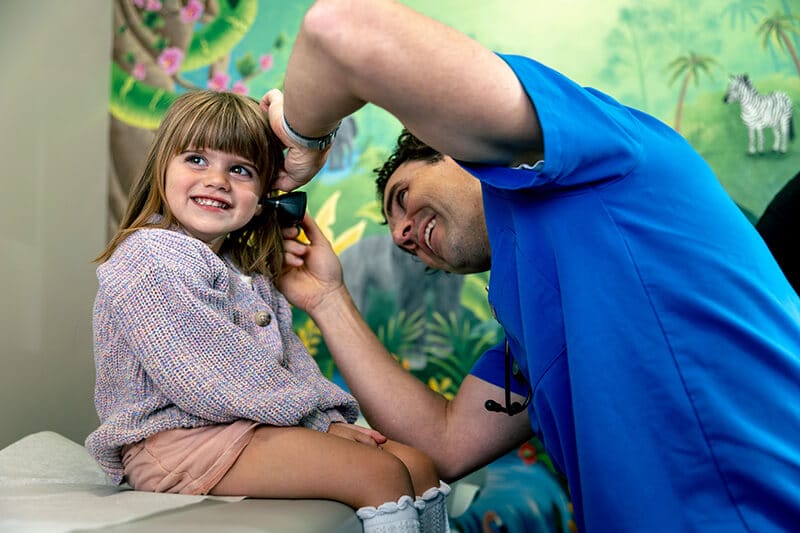New parents understandably expect their infants to be “smooth as a baby’s bottom,” but the reality is that baby skin plays host to a variety of common rashes and skin conditions. If your baby has diaper rash, cradle cap, or any other rashes and skin conditions common among newborns, you should know that you’re not alone and that there’s nothing to worry about.
Throughout your baby’s first year, newborns almost always have a few common skin conditions. By and large, they are harmless, temporary, and resolve without any treatment. In most cases, your baby’s rash will bother you more than it bothers them. Keep an eye out for these common rashes and skin conditions so you know what to expect, what you can do, and when to call your provider.
Common Newborn Rashes
Cradle Cap
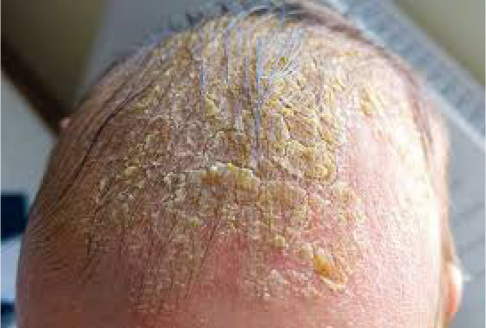
Cradle cap is a common scalp condition that impacts most babies at some point in the first three months of life. It presents with yellow or white scales surrounded by a rash. The flakes feel greasy or flakey to the touch and will crust or flake off. The sight can be disconcerting, but cradle cap doesn’t cause pain or itching and doesn’t impact eating or sleeping. It’s common, harmless, and usually resolves all on its own within a few months.
Milia (Baby Face Bumps)
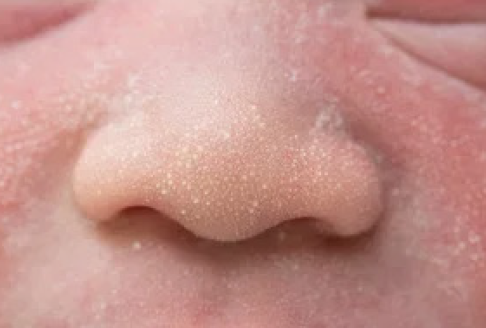
About half of all newborns develop cysts beneath the skin, which look like tiny white bumps on the surface. They are sometimes called milk spots and usually last just a few weeks before diminishing. Neonatal milia are apparent at birth and typically group on and around the nose. Primary milia can affect older kids and adults and is present on the eyelids, forehead, cheeks, or genitals. There are no long-term concerns for milia. They only impact appearance and don’t cause any pain or discomfort.
Baby Acne
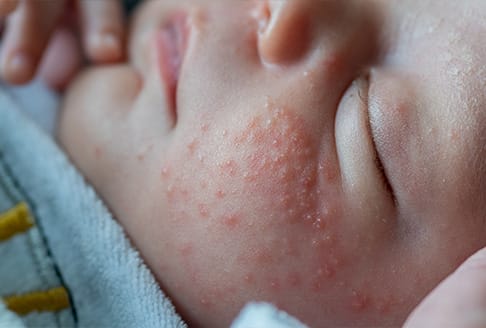
Newborn acne might look similar to that seen in teenagers and adults, but its cause and prognosis differ. While bacteria cause acne later in life, newborn acne is caused by hormones your baby is exposed to before birth. It presents as small inflamed bumps on the face, neck, back, and chest and usually shows up in the first 2 to 4 weeks of life. Some babies are even born with pimples. There aren’t any known risk factors associated with baby acne, and it usually resolves on its own in just a few weeks.
Diaper Rash
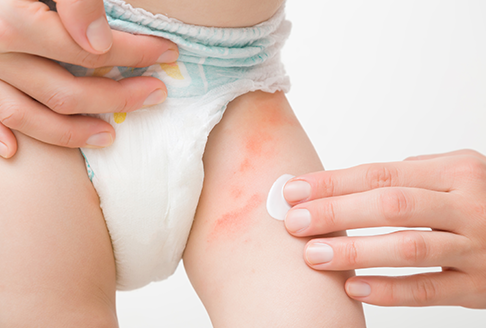
The bane of parents everywhere, diaper rash is one of the most common and recurrent skin conditions experienced by newborns. In many cases, diaper rash can be treated with simple at-home remedies, but your provider may prescribe an ointment, cream, or antibiotics/antifungal if an infection is present. When diaper rash shows up, keep your baby’s skin clean and dry, change wet or soiled diapers as soon as possible, and apply a barrier cream, paste, or ointment. Increasing airflow by using slightly larger diapers or letting your little one go diaper-free may help. Bathe your baby daily and pay attention to potential triggers like detergents or soaps. Diaper rash can take several days to improve even with treatment, and it may return, but it usually resolves with care and patience.
Baby Eczema
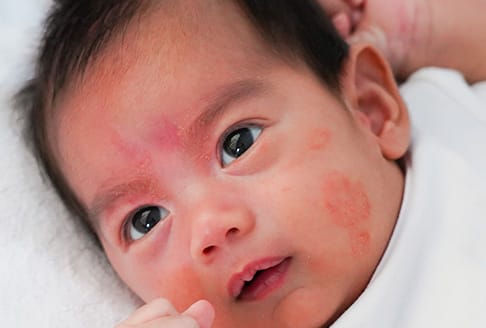
Officially called atopic dermatitis, baby eczema affects up to a quarter of all children. It can be treated with a combination of a good bathing routine, topical treatments, and avoiding triggers. Eczema looks like dry, scaly, itchy skin and usually appears on the cheeks and scalp. It can also occur in skin folds like knees, elbows, and behind the ears. Eczema can usually be managed with daily bathing, using warm water and a mild cleanser. After the bath, pat your baby dry and moisturize with a fragrance-free ointment. Avoid irritants like itchy fabrics or harsh soaps, and keep your baby’s nails clipped to avoid scratching.
Erythema Toxicum
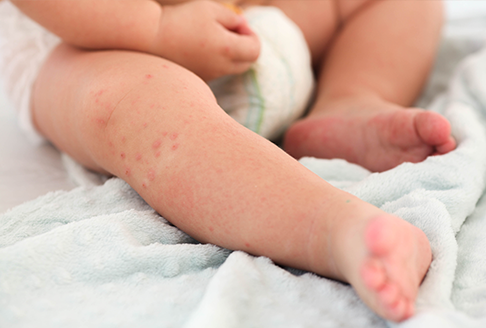
Erythema toxicum is one of the most common skin conditions, impacting between 40% and 70% of babies. It may be present at birth but commonly appears on the second or third day of life. It begins as 2 to 3-millimeter macules (flat, discolored areas) and papules (solid or cystic raised spots), which later turn into pustules (pus-filled blisters or lesions), surrounded by a blotchy area. Lesions can appear almost anywhere on the body, including the face, body, and limbs. It typically resolves over about a week but may recur for several weeks. In most cases, erythema toxicum resolves on its own without treatment.
Salmon Patches
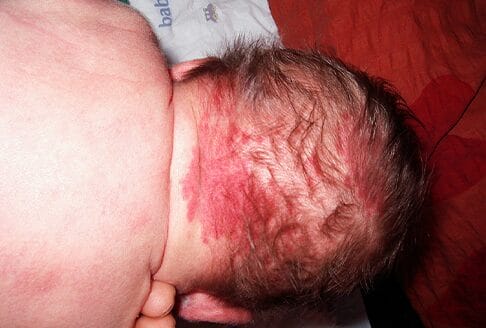
Also known as a stork bite, angel kiss, or by its more clinical name, nevus simplex, salmon patches are characterized by red patches on the forehead, eyelids, lips, nose, or back of the neck. They are common birthmarks, occurring in about one-third of babies, caused by stretching certain blood vessels, and they may darken when your baby cries or in response to temperature changes. Some babies are born with salmon patches, and they appear later in others. No treatment is needed, and they usually fade within 18 months.
Roseola
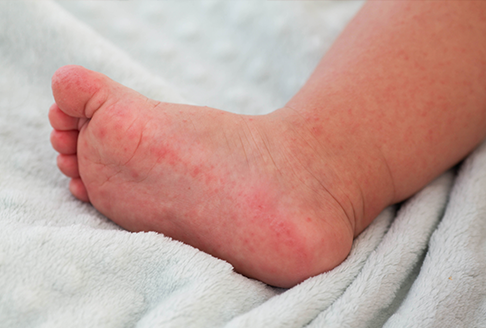
Roseola is one of the most common viral infections in newborns and infants, impacting almost all children by the time they are two years old. It’s contagious and spreads through saliva or respiratory droplets. The infection presents with a sudden high fever, lasting three to four days and can lead to febrile seizures (convulsions caused by fever) and complications in kids with weakened immune systems. Once the fever subsides, a rash develops and lasts for two to four days. Kids are no longer contagious 24 hours after the fever subsides, and most kids recover in about a week. Like other viruses, it has to run its course.
Congenital Melanocytosis
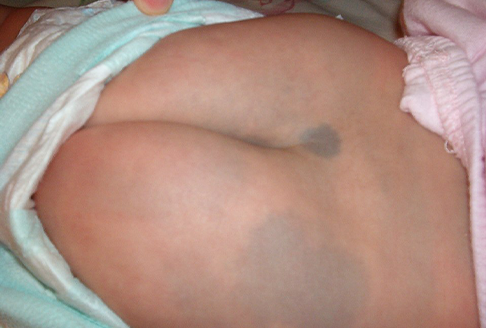
Congenital melanocytosis is a common type of birthmark that might be mistaken for bruising. It typically presents with irregularly shaped blue or blue-gray spots appearing at or soon after birth. They are most common at the base of the spine, buttocks, back, and shoulders. These skin markings can appear on anyone but are most common among children of Asian descent and children with darker skin. It’s not associated with any other illnesses or conditions, and the markings aren’t painful. In most cases, they fade within the first year of life and disappear entirely by adolescence.
Tips for Reducing Newborn Rashes
There is no one-size-fits-all solution for the common rashes that impact babies, but there are a handful of simple strategies that may reduce their frequency, severity, and duration.
- Keep your baby lean and dry: bathe your baby daily, pat dry, and apply moisturizers as needed
- Change wet and soiled diapers as soon as possible
- Avoid scents and other additives in detergents and soaps, and look for products that are specifically made for baby skin
- Dress your little one in breathable fabrics and dress for the environment you’re in to avoid overheating
- Keep up to date on vaccinations
When To Ask For Help With A Baby Rash
- Fever: most rashes are purely aesthetic, and a fever may suggest the presence of infection or another illness
- Long-lasting or painful rash: if the rash persists beyond the typical time frame, doesn’t respond to treatment, or causes pain or irritation
- Spreading: Contact your provider if your child’s rash spreads over a significant part of their body, particularly if hives are present on or near the mouth
- Trouble breathing: Coughing, vomiting, wheezing or other respiratory problems
- Behavioral changes: Stiff neck, sensitivity to light, or shaking
Most rashes don’t need any special attention outside of patience and a watchful eye. They usually resolve on their own over the course of days or weeks, but rare cases require a visit to your provider. Watch for these symptoms, and contact your child’s provider with any concerns!


